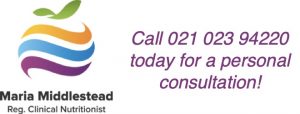How To Thwart Fungal, Yeast, Viral, Bacterial and Parasitic Invaders
GOOD HEALTH SOLUTIONS (Report 2)
How To Thwart Fungal, Yeast, Viral, Bacterial and Parasitic Invaders – and Build Strong Immunity
With this report discover:
• The inexpensive food in every supermarket that can create the ultimate barrier to invaders. How – and the important issue of when – to use it.
• The two most likely food intolerances with chronic fungal and yeast infections. And how undiagnosed food sensitivities can be the real culprit behind frequent infections of all kinds.
• Why iron supplements and calcium-enriched milks can be dangerous.
• How bloating, and tiredness after eating can lower your resistance to invaders – why these symptoms occur and the easy solution.
• A pleasant food, and 3 hot drinks that can spectacularly remedy many infections.
• The best product to use on visibly evident infections such as on skin, labia, vagina, and feet. It’s so natural you can eat it.
• Sorry, guys: why the toilet lid should definitely be stored in a down position.
• The unassuming household item with the highest bacteria count (far more than the toilet) and what to do about it.
• The surprising news about the role of dental floss, salads, muesli bars and canola.
• The almost free, simple routines, which are the most critical protocols for thwarting all invaders.
• Your key macro and micronutrient helpers, which are essential for dealing with and preventing infections. How to incorporate these into meals as delicious as they are therapeutic.
The following is a free preview of this report:
Your Immune System: An Owner’s Manual
If you have ever had a fever, or red and itchy skin after an insect bite, a wound with pus, or swollen glands in your throat: congratulations.
You survived thanks to an immune system hard at work quelling invaders.
It is the immune system’s job to protect the body from threatening antagonists. These include the body’s own damaged – perhaps cancerous – cells and a variety of pathogens. Of the latter, one classification is bacteria. These are self-sufficient and increase by subdivision; a process that produces toxins and leaves us feeling ill. Until the twentieth century bacterial infections were the leading cause of death. This dramatically lessened when the crucial contribution of hygiene was understood. Next in importance was the development of antibiotics in 1928.
Viruses are smaller than bacteria and cannot be treated by antibiotics. They take over host cells for their main mission of massive reproduction. Fungi make up the largest family of living organisms on the planet. These include mushrooms, moulds and yeasts. Some are beneficial (penicillin is derived from a mould) and even tasty. Others such as the yeast candida albicans usually live unassertively in the human intestine, but under the right conditions can excessively populate and weaken its host.
Parasites are organisms of the animal kingdom that can forage and derive nourishment at the expense of their hosts. These include tapeworms and round worms, microscopic giardia, and the infectious transmissions made by mosquitoes, ticks, lice and fleas. A perhaps unpleasant but illustrative example of the voracious power of pathogens is what happens to a dead human body. Within hours – without the protection of the immune system – a corpse is invaded by a multitude of bacteria and fungi. Within weeks these organisms leave only the skeleton behind.
This intense activity provides a needed and efficient global sanitation service. To a living body however, these organisms can cause infection, which means entry and multiplication. Thankfully there are numerous therapeutic foods, vigilant micronutrients and simple, preventative measures that are brilliantly designed to combat the opposing army. Otherwise the immune system is ill equipped to prevent the next developmental stage: disease. This is when cells become damaged and symptoms appear.
There are three extensive lines of defense. The first level of barriers include the oily antiseptic of sweat on the skin; antiseptic tears that wash the eyes; prohibitive mucous and enzymes in saliva; more mucous and fine hairs that line the respiratory and digestive tracts (for entrapment and propulsion elsewhere). Plus, there are numerous chemical barriers – most notably the caustic hydrochloric acid (HCL) in the stomach. Its powerful actions require specific dietary practices to harness.
Unfortunately many people today show evidence of low HCL levels, as can be evident with symptoms such as bloating, gas and tiredness after eating. If HCL is low, few nutrient helpers can be absorbed even from a healthy diet, and pathogens are free to penetrate further and trigger the next phase of immune response. Tissue may become inflamed as white blood cells (WBCs) called phagocytes seek to isolate, engulf and destroy invaders. If necessary a third line of action enlists other WBCs – lymphocytes – to release powerful assault experts known as antibodies.
Millions of these swim alertly throughout our interiors looking for antigens: pathogens, tumour cells or otherwise toxic particles. Antibodies are Y-shaped proteins that use their tips to bind to antigens and destroy them. They signal to complement proteins produced by the liver to assist with the attack and removal of debris. Efficient liver function is essential for the body’s detoxification overall, for the critical transformation of the nutrients in our foods into the building blocks to produce antibodies, WBCs, in fact every bodily infrastructure, and to create the energy required for these processes and all others. Many relationships may come and go in life, but always remember to love your liver!
Poor liver function can lead to lowered defenses against invaders, or it can result from serious attacks by the likes of glandular fever or hepatitis. Specific dietary practices are essential to ensure optimal liver capabilities. Fortunately these protocols are as rewarding in terms of dining as they are in improved health and vitality…


